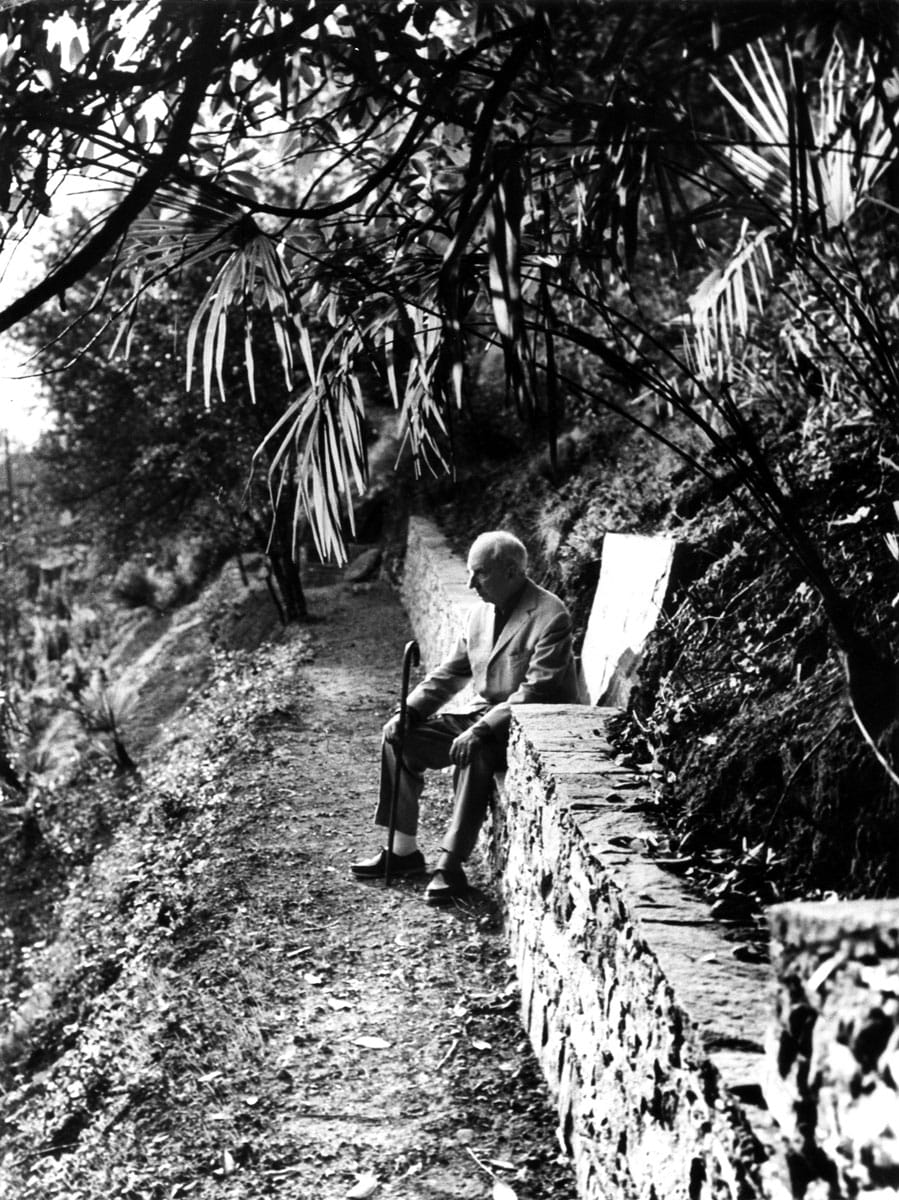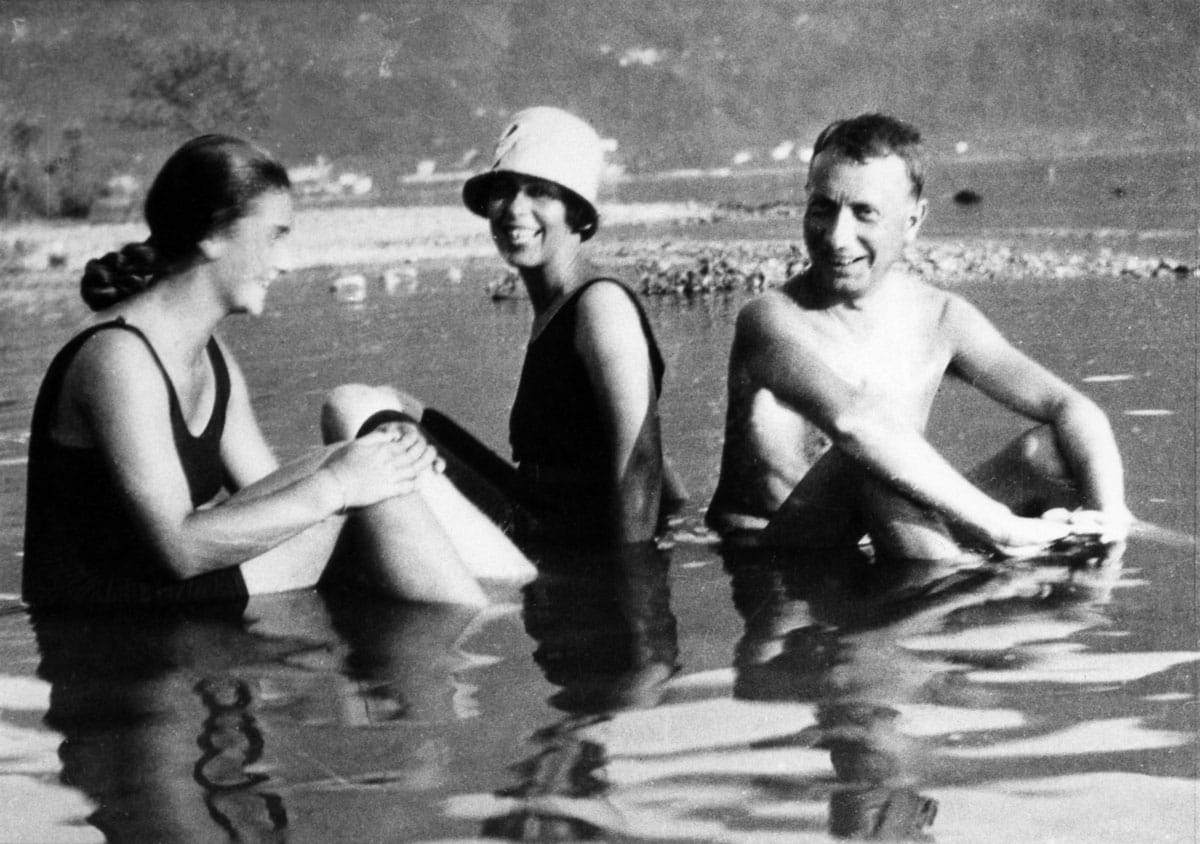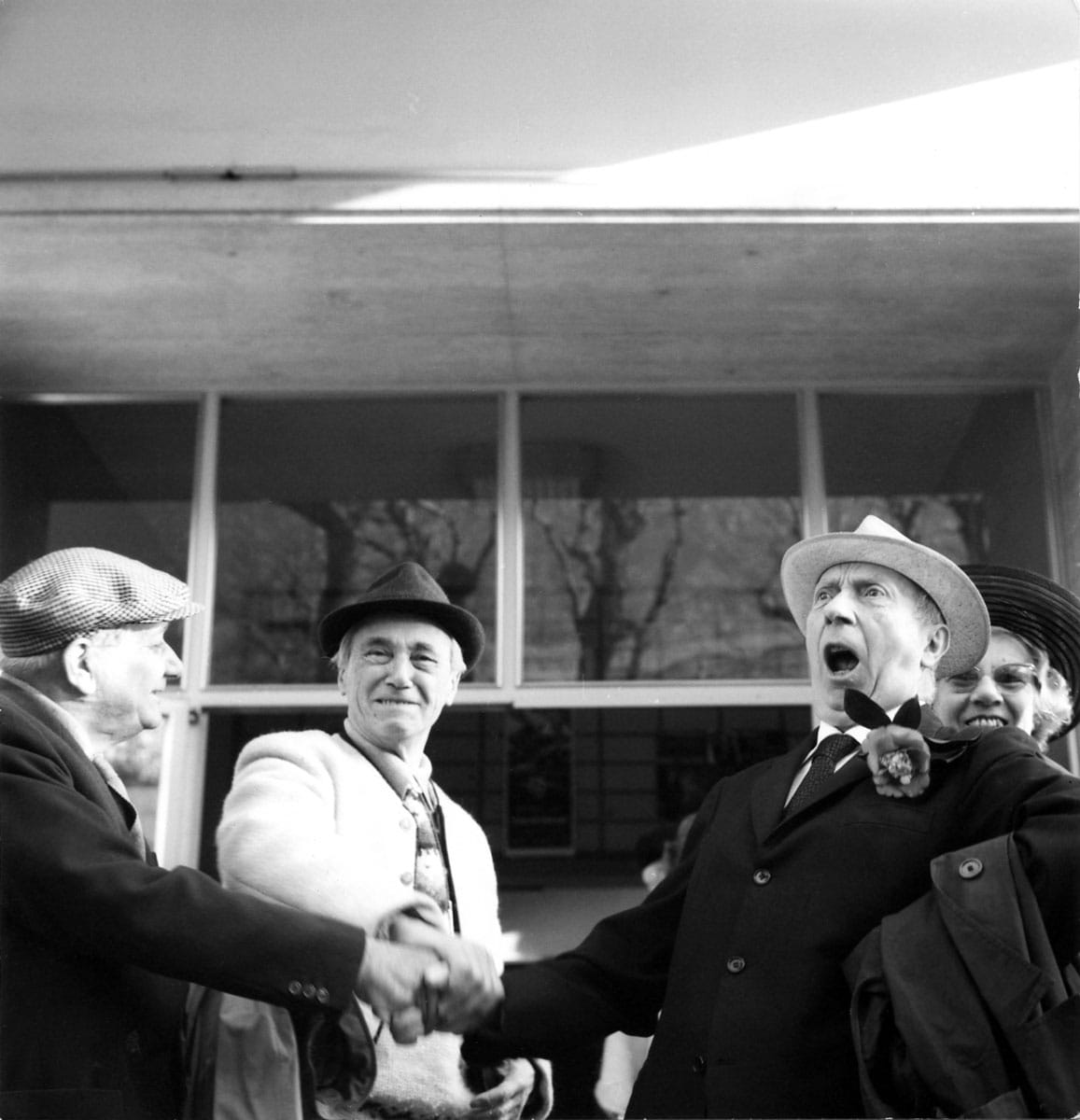Arp and Ticino
In Ascona I did India ink drawings of broken branches, roots, grass and stones that the lake had thrown up on the shore. Finally, I simplified these forms and united their essences in fluid ovals, symbols of the metamorphosis and development of bodies.
Jean Arp, "Signposts", in: Jean Arp, Arp on Arp: Poems, Essays, Memories, ed. Marcel Jean, trans. Joachim Neugroschel, Viking Press: New York, 1972, p. 271.

Jean Arp in the garden of the Ronco dei Fiori, 1965
If one looks at the various phases in Arp’s life, the artist’s connection to Ticino, and in particular to the region around the northern side of Lago Maggiore, deserves special consideration. This connection and the beauty of the location ultimately led him to choose Locarno as his place of residence in the final years of his life.
Directly after the outbreak of the First World War, Arp and his brother, François, left Cologne, where the two were temporarily staying, and went to Paris. They, however, also soon left France in order to bring themselves to safety in Switzerland. They arrived in Ascona in 1915. The choice of this location does not appear to be coincidental in light of Arp’s interest in philosophical, religious and spiritual questions – he was reading Jakob Böhme, Meister Eckhart and Lao Tse, was interested in Eastern mysticism, travelled in theosophical circles – and would thus have been aware of a certain closeness to what had been developing over the previous ten years round Monte Verità, the hill above Ascona. In addition, other artist friends also lived here such as the Romanian painter Arthur Segal (1875–1944), who Arp met in Berlin in 1913 during his work for Der Sturm magazine and had been living in Ascona since 1914. Adya and Otto van Rees, two artists with whom Arp worked and who would exhibit in Zurich in November of the same year, also lived in Ascona in 1915.
In the years that followed, when Arp lived in Zurich, he also continued to visit Ascona and Monte Verità, now in the company of Sophie Taeuber, who participated along with other female students in the dance courses of Rudolf von Laban on the hill during the summer. Jean Arp and Sophie Taeuber came from Zurich to Ascona every summer, and with them other artists from the Dada circle: Hugo Ball and Emmy Hennings, who later settled in Ticino, Hans Richter, Marcel Janco, and many others. They stayed at Monte Verità, where they organised events, celebrations and exhibitions along with other artists living there – amongst them, starting in 1918, Marianne von Werefkin and Alexej Jawlensky as well as Walter Helbig, an artist friend of Arp’s from the time of ‘ Der Moderne Bund’. And Arp himself, as he later recalled, developed the elementary forms in his art on the shore of the lake near Ascona.

Elisabeth Wiegmann, Sophie Taeuber and Jean Arp in Ascona, 1925

Alberto Magnelli, Hans Richter, Jean Arp and Marguerite Arp in Locarno, 1965
The Hagenbach family had a holiday home in Ascona. Arp was a frequent guest there along with Sophie Taeuber-Arp in the nineteen-thirties, and with Marguerite Hagenbach in the nineteen-fifties. The idea of settling down in this region arose. Finally, in 1959, the year of their marriage, Arp and Marguerite Hagenbach purchased a house in Locarno-Solduno. For Arp, this was in no way merely an old age or retirement home: he not only set up a studio in the house, but also moved into another in the studio complex established by the sculptor Remo Rossi in Locarno. Here, in direct proximity to the studios of Hans Richter and Italo Valenti, he worked on his late sculptures with the help of his assistants Alberto Meli and Candido Epis.
In 1965, arranged by Remo Rossi, an exhibition with works by Arp and other artists in the Arp-Hagenbach collection was presented at the Castello Visconteo in Locarno. Before the inauguration of the exhibition Arp already donated all of the works exhibited to the city of Locarno with a view to thus establishing the basis for a museum of modern art. As thanks, the Arp and Hagenbach were named as honorary citizens of the city.
On 7 June 1966 Arp dies in Basel, he is buried on the cemetery of Locarno.